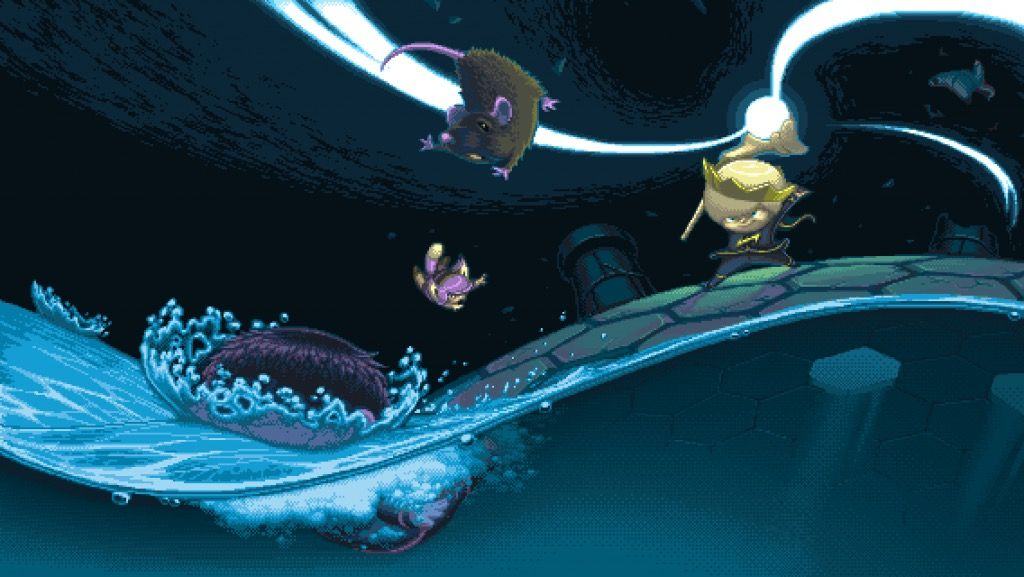Blake Reynolds, lead artist at Dinofarm Games (Auro, 100 Rogues), has come to the conclusion that “pixel art” is over. He’s decided to hang up his digital pencil tool and create art for games that current audiences can understand.
“Auro,” he writes, “is likely to be the last Dinofarm Games title to feature pixel art.”
Reynolds is a self-avowed pixel art fan. His team’s latest game, Auro, is a love letter to the retro gaming aesthetic from the ’90s.
“That art was probably the primary reason I got into this field in the first place,” he writes in a thoughtful blog post. “It’s a beautiful form, and some of my favorite pixel artwork is being made today.”
“Ultimately, it’s the audience’s perception that matters, not the artist’s.”
In a brilliant, well-written analysis of why he’s giving up the art form in his development work, Reynolds points out how today’s gaming audience, especially on mobile, might not be able to see how pixel art is a conscious choice, rather than an easy out for less-artistic types.
The Nintendo Entertainment System (NES), regarded as one of the most influential gaming consoles ever, used pixels to represent characters and video game action only because that was the technology available. You could fit 50 NES screens onto an iPhone 6 screen these days, so using pixels can only be an aesthetic choice.
Reynolds and his team found out that many of their customers had problems with Auro’s “pixellated” artwork; it was stretched, pulled, and blurry on many different platforms, proving that current video games should probably be created at the highest resolution possible to look best on all screens.
“Many developers who try to achieve the retro aesthetic overlook how much magnification is going on,” writes Reynolds, “resulting in not one, but several different resolutions at once. Not only can this be unsightly, but it’s ‘showing its strings,’ which defeats the purpose of limiting your resolution in the first place.”
Ultimately, he’s saying, it’s the audience’s perception that matters, especially if you want to sell games to lots of people.
The full post is a thoughtful read, with a ton of details, visual explanations, and some fantastic links to pixel artists creating amazing artwork with the pixel technique. Be sure to head on over and check it out.
Source: Dinofarm Games
Via: BoingBoing


